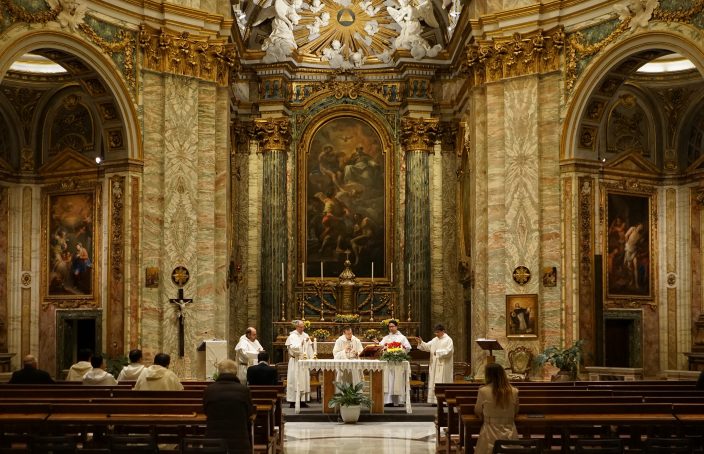Whatever Happened to the Church?
Ah, the good old days! When the pews were filled at Sunday mass. When the stores were closed out of respect for the commandment to keep holy the Lord’s Day. When we all knew clearly what was a sin and what was not. When the church music was commanding and the liturgy mysterious but devotional. Where did it all go?
We’ve all heard those laments for the church of the past—that is, the church of the 1940s and 1950s, before all the changes began to strip away the old features that many of us found so comforting.
It’s old news that the church has been undergoing something of a crisis. Old news because this has been going on for sixty years by now. The fall-off in regular church attendance dates back to the early 1960s. Not just in Catholic churches, but in those of every denomination. As the number of empty pews increased, friends of mine who would not have missed Sunday mass when they were younger confided that now they might attend church once a month or even less often.
What happened?
It depends on who you ask. Some seem to think that just as the radical turn-around of the 1960s has robbed us of the comforting features of our traditional family, the religious revolution in the form of Vatican II has done the same to the church. As the form of this church “family,” as we once knew it, crumbled, we were left without the ritual practices that once sustained us. In this case it wasn’t the old family dinner that was lost, but the Latin high mass and other venerable practices.
In their eyes, the damage has been even more serious. Those unchanging truths, the very bedrock of our faith, have been challenged. These challenges might include the liberty taken these days in interpreting scripture, the gratuitous way in which salvation is being offered to those who don’t abide by the commandments, the facile down-scaling of what were once generally regarded as mortal sins, the dismissal of God’s judgmental role in favor of his mercy, and much more. Is this just another attempt to cater to the modern individual? To reshape the truth to make it more palatable to the tastes of our contemporaries?
Why can’t we return to those good old days? The days when we all agreed on what was right and what was wrong. The days when the pews were filled even if the mass was celebrated in a strange language. The days when the clouds of incense rose over the congregation.
Those enraptured by the past sense, quite rightly, that there was something noble about what we enjoyed back then. We can all look back fondly on a stately structure that seemed to unify us, before the age of radical individualism descended upon us.
In their effort to return to the those earlier times—the days when the pews were filled and the faithful were seeming united in their beliefs—they seek a pathway back to the past. Why not the Latin mass, with its uniform liturgy, which symbolized the richness of those glorious times? Perhaps it’s the first step in recapturing more of this wondrous past. We can hope that bit by bit we might recreate a church in which all the faithful bow in deference to church beliefs and practices alike.
But will it work? Will a restoration of any of the old rituals—Latin mass, kneeling to receive communion, or anything else—fill those empty pews and recreate the unity that we have always treasured? Or is it more like humming the old folk songs of the 50s and 60s in response to the protests in our divided society today? The tunes might remind us of the good old days, but they won’t get us any closer to re-creating those times.
Hum those old songs if they make you feel better. But if you want to fill up those pews again, it might be wise to figure out why they were emptied in the first place. Next week we’ll have a look at what the reasons might have been.



